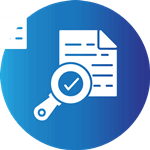 As a student looking for quality bacteria enumeration lab report writing services, we've got your back. Navigating the complexities of microbiology can be challenging, especially when it comes to accurately counting and identifying bacterial colonies. This task requires not only a thorough understanding of microbiological techniques but also meticulous attention to detail and precise documentation. Many students find themselves overwhelmed by the stringent requirements and time-consuming nature of lab report writing. That’s where we come in. Our specialized writing services are designed to alleviate the stress and pressure associated with this intricate aspect of microbiology studies. Whether you’re dealing with direct counts, viable counts, or optical density measurements, our team of experts is well-equipped to provide comprehensive and accurate lab reports tailored to meet your specific needs. We understand that each lab report must adhere to strict academic standards, including detailed methodology, clear presentation of results, and insightful discussion. We pride ourselves on delivering high-quality; plagiarism-free reports that not only demonstrate your understanding of bacterial enumeration but also enhance your academic performance. Our writers are experienced professionals with extensive backgrounds in microbiology and related fields, ensuring that every report is both scientifically accurate and pedagogically sound. By choosing us, you gain access to a wealth of knowledge and expertise, enabling you to submit well-structured, precise, and informative lab reports that stand out. We are committed to helping you achieve your academic goals by providing reliable support and guidance throughout your studies. As a team that believes in academic excellence, we intend to help students across various disciplines offload the burdens of bacteria enumeration lab reports off their shoulders. Therefore, students also looking for reliable writing services for lab reports on sports science, sports nutrition, sports psychology, or sports medicine have a team to liaise with.
As a student looking for quality bacteria enumeration lab report writing services, we've got your back. Navigating the complexities of microbiology can be challenging, especially when it comes to accurately counting and identifying bacterial colonies. This task requires not only a thorough understanding of microbiological techniques but also meticulous attention to detail and precise documentation. Many students find themselves overwhelmed by the stringent requirements and time-consuming nature of lab report writing. That’s where we come in. Our specialized writing services are designed to alleviate the stress and pressure associated with this intricate aspect of microbiology studies. Whether you’re dealing with direct counts, viable counts, or optical density measurements, our team of experts is well-equipped to provide comprehensive and accurate lab reports tailored to meet your specific needs. We understand that each lab report must adhere to strict academic standards, including detailed methodology, clear presentation of results, and insightful discussion. We pride ourselves on delivering high-quality; plagiarism-free reports that not only demonstrate your understanding of bacterial enumeration but also enhance your academic performance. Our writers are experienced professionals with extensive backgrounds in microbiology and related fields, ensuring that every report is both scientifically accurate and pedagogically sound. By choosing us, you gain access to a wealth of knowledge and expertise, enabling you to submit well-structured, precise, and informative lab reports that stand out. We are committed to helping you achieve your academic goals by providing reliable support and guidance throughout your studies. As a team that believes in academic excellence, we intend to help students across various disciplines offload the burdens of bacteria enumeration lab reports off their shoulders. Therefore, students also looking for reliable writing services for lab reports on sports science, sports nutrition, sports psychology, or sports medicine have a team to liaise with.
Factors that lead to errors in laboratory experiments; reliable services
These experiments involve counting and quantifying bacterial cells in a given sample. This explains why writing these reports is a tough task for many students. Several factors can lead to errors or inaccuracies in these experiments. However, with our quality bacteria enumeration lab tests report writing services, you will understand the factors that can be unfavorable for you. These factors include;
- Sampling Errors: The process of obtaining a representative sample from a larger population can introduce errors. If the sample is not properly randomized or collected, it may not accurately represent the entire population of bacteria.
- Dilution Errors: Many bacterial enumeration methods require diluting the sample to a manageable concentration. Errors in the dilution process, such as incorrect volumes or mixing, can lead to inaccurate cell counts.
- Viable but Non-Culturable (VBNC) Cells: Some bacteria may enter a viable but non-culturable state under certain conditions, making them undetectable by standard culture-based methods.
- Cell Aggregation and Clumping: Bacterial cells can aggregate or form clumps, which can lead to inaccurate counting if they are not properly dispersed. Clumps may be counted as single cells or not counted at all.
- Inaccurate Pipetting: Precision in pipetting is crucial. Small errors in pipetting volumes can significantly affect the accuracy of bacterial cell counts.
- Variability in Growth Rates: Bacteria within a sample may have varying growth rates, leading to differences in cell division and growth during incubation. This can impact accurate enumeration if not accounted for.
- Contamination: Contamination from other microorganisms or environmental factors can introduce foreign cells into the sample, leading to overestimation or underestimation of bacterial counts.
- Medium Composition: The composition of the growth medium used for culturing bacteria can influence their growth and enumeration. Variations in medium composition can lead to inconsistent results.
- Observer Bias: Human error in counting and recording bacterial colonies or cells during manual enumeration can introduce bias and inaccuracies.
- Instrumentation Errors: For automated counting methods, inaccuracies in instrument calibration, maintenance, or operation can lead to errors in bacterial enumeration.
- Time Sensitivity: Some enumeration methods require counting bacteria within a specific time frame to ensure accurate results. Delayed counting can lead to changes in bacterial growth and inaccurate counts.
To be on the safe side, students should make use of professional bacteria enumeration lab tests report writing services.
Importance of clear data visualization in an enumeration report; expert writers
Data visualization is a critical component of scientific research, particularly in lab reports such as bacteria enumeration. For students, mastering the art of clear and effective data visualization can be challenging, yet it is essential for accurately conveying research findings. Our expert bacteria enumeration lab tests report writers play a significant role in helping students understand and implement these visual techniques effectively, thereby enhancing the quality and clarity of their lab reports. Bacteria enumeration involves counting the number of bacteria in a sample, a common procedure in microbiology labs. This process generates a vast amount of data that needs to be presented clearly and concisely. Data visualization transforms this data into graphical representations like charts, graphs, and tables, making it easier to interpret and understand. However, many students struggle with how to present their data effectively. This is where our experts come in, providing guidance and support to ensure students can create visualizations that accurately reflect their findings. They bring a wealth of experience and knowledge to the table, helping students navigate the complexities of data visualization. They help with ensuring:
- Understanding of Different Types of Visualizations: Our experts explain the various types of data visualizations available, such as bar charts, histograms, scatter plots, and pie charts. They help students choose the appropriate visualization based on the nature of their data and the message they wish to convey.
- Clarity and Precision: We emphasize the importance of clarity and precision in data presentation. They guide students on how to label axes, choose scales, and use color effectively to avoid misinterpretation of data.
- Software Proficiency: Many students are unfamiliar with the software tools required for creating high-quality visualizations. Our writers can provide tutorials and tips on using software like Excel, R, or Python, making the process more accessible and less intimidating.
- Consistency and Accuracy: Ensuring that data visualizations are consistent and accurate is crucial. We help students cross-check their data, ensuring that all visualizations are correct and consistent with the written content of the lab report.
By collaborating with expert writers, students not only improve their lab reports but also gain a deeper understanding of data visualization principles. This knowledge is invaluable across various scientific disciplines, enhancing their overall academic performance and research skills. Clear data visualization is essential for effective communication in bacteria enumeration lab reports. With the assistance of qualified bacteria enumeration lab tests report writers, students can overcome common challenges, ensuring their data is presented accurately and understandably. This collaboration not only improves the quality of their lab reports but also equips them with vital skills for their future scientific endeavors.
Determining the best instruments for bacteria enumeration lab tests; best services
Selecting the best instrument for bacteria enumeration lab tests is crucial for accurate and reliable results. Students face challenges in identifying the most suitable tools due to the vast array of options available. By reaching out to reliable service providers with requests such as ‘write my lab report on bacteria enumeration,’ students can access expert guidance on the various instruments and their applications. We provide detailed explanations and comparisons of different enumeration methods, such as plate counts, spectrophotometry, and flow cytometry, helping students make informed decisions. This is what to do;
- Consider the type of sample: Different types of samples require different instruments for this process. For example, liquid samples can be easily diluted, making it easy to count bacteria using a microscope. In contrast, solid samples require the use of a plating technique, where bacteria are cultured on agar plates, and colonies are counted.
- Understand the principles behind each instrument: Get to know the principles behind each instrument used in a lab. For example, the spread plate technique involves spreading a diluted sample on an agar plate and allowing the bacteria to grow into colonies. The number of colonies is then counted to determine the bacterial count. On the other hand, the pour plate technique involves mixing a diluted sample with agar and then pouring the mixture into a petri dish. The bacteria then grow both on the surface and inside the agar, and colonies can be counted.
- Consider the accuracy and precision of the instrument: Another crucial factor to consider when selecting an instrument is its accuracy and precision. Accuracy refers to how closely the instrument's measurements align with the true value, while precision refers to the degree of variation in the measurements. Ideally, students should choose an instrument that is both accurate and precise. However, if they have to choose between the two, precision is more important as it ensures that the results are reproducible.
- Determine the detection limit of the instrument: The detection limit refers to the lowest number of bacteria that an instrument can detect. You must determine the detection limit of the instrument they intend to use as this will determine the accuracy of their results. If the instrument's detection limit is too high, they may miss detecting low numbers of bacteria in their sample.
- Evaluate the ease of use of the instrument: Also consider the ease of use of the instrument they intend to use. Some instruments require specialized training to be used effectively, while others may be more user-friendly. It is crucial to select an instrument that is easy to use to minimize errors and ensure accurate results.
- Compare the cost of each instrument: Cost is another important factor to consider when selecting an instrument. Some instruments may be more expensive than others, and students must weigh the cost against the benefits of using a particular instrument. While cost should not be the only factor determining the instrument selection, it is an essential consideration, especially for students working with limited resources.
By liaising with experts through a ‘write my lab report on bacteria enumeration’ request, students gain expert insights into the best instruments for bacteria enumeration lab tests. Experts offer detailed comparisons and practical advice, ensuring students select the most suitable tools for accurate results, thereby enhancing the quality and reliability of their scientific research.

We provide top-mark services to students, ensuring that their academic requirements are met with the highest standards of precision and quality. Understanding the complexities and detailed methodologies involved in bacteria enumeration, our expert team is dedicated to delivering meticulously crafted lab reports that not only showcase accurate results but also demonstrate a profound understanding of microbiological principles. Our services are tailored to meet the unique needs of each student, recognizing that lab reports in microbiology demand a keen eye for detail, thorough analysis, and clear, concise presentation of data. By entrusting your bacteria enumeration lab reports to our professionals, you gain access to comprehensive support that covers every aspect of the assignment, from hypothesis formulation and experimental design to data interpretation and conclusion. We pride ourselves on adhering to strict academic guidelines and deadlines, ensuring that each lab report is completed and delivered on time without compromising quality. Our writers are well-versed in various formatting styles and requirements, guaranteeing that your report will be formatted correctly and polished to perfection. Moreover, we understand the importance of originality and accuracy in academic writing. Each report undergoes rigorous quality checks and plagiarism screenings to ensure that you receive an authentic, error-free document. Beyond just writing, our services offer valuable insights and explanations, enhancing your understanding of the bacteria enumeration process. This educational approach not only helps you achieve better grades but also deepens your knowledge, preparing you for future academic and professional endeavors in microbiology and related fields. Ultimately, our commitment to excellence and student success sets us apart as the premier choice for writing services. With our support, you can confidently navigate your microbiology coursework, knowing that your lab reports reflect the highest standards of scientific rigor and academic integrity. Choosing our affordable writing assistance for lab reports on chemistry, biology, math, or agriculture makes the difference we can make in your academic journey.
Help with Writing a Lab Report on the Enumeration of Bacteria
 As a student navigating the intricate world of microbiology, the task of writing a lab report on the enumeration of bacteria can seem discouraging. The process involves not only understanding the complex methodologies used to count bacterial colonies but also effectively communicating your findings clearly and concisely. This is where expert help can make a significant difference. If you find yourself overwhelmed by the detailed procedures and rigorous standards required for such a report, you’re not alone. Many students seek professional assistance to ensure their lab reports meet academic expectations and showcase their hard work accurately. Our service specializes in providing comprehensive support for students like you, who are striving to excel in their microbiology courses. Whether you need help with the experimental design, data analysis, or writing the report itself, we have a team of experienced professionals ready to assist. We understand the importance of precision and clarity in scientific reporting, and our experts are well-versed in the latest techniques and standards in bacterial enumeration. From plate counts to turbidity measurements, we can guide you through each step, ensuring that your lab report is both scientifically sound and well-articulated. Feel free to consult us for expert help with your lab report. Our personalized approach ensures that your report is tailored to your specific requirements and academic level. We aim to not only help you achieve a high grade but also to enhance your understanding of the subject matter. With our assistance, you can confidently present your findings, knowing that your lab report adheres to the highest academic standards. For students seeking academic excellence, seeking our reliable, quality, and cheap lab report assistance is an additional merit. Don’t let the complexity of microbiological techniques hold you back; reach out to us today and take the first step towards mastering your lab report writing skills.
As a student navigating the intricate world of microbiology, the task of writing a lab report on the enumeration of bacteria can seem discouraging. The process involves not only understanding the complex methodologies used to count bacterial colonies but also effectively communicating your findings clearly and concisely. This is where expert help can make a significant difference. If you find yourself overwhelmed by the detailed procedures and rigorous standards required for such a report, you’re not alone. Many students seek professional assistance to ensure their lab reports meet academic expectations and showcase their hard work accurately. Our service specializes in providing comprehensive support for students like you, who are striving to excel in their microbiology courses. Whether you need help with the experimental design, data analysis, or writing the report itself, we have a team of experienced professionals ready to assist. We understand the importance of precision and clarity in scientific reporting, and our experts are well-versed in the latest techniques and standards in bacterial enumeration. From plate counts to turbidity measurements, we can guide you through each step, ensuring that your lab report is both scientifically sound and well-articulated. Feel free to consult us for expert help with your lab report. Our personalized approach ensures that your report is tailored to your specific requirements and academic level. We aim to not only help you achieve a high grade but also to enhance your understanding of the subject matter. With our assistance, you can confidently present your findings, knowing that your lab report adheres to the highest academic standards. For students seeking academic excellence, seeking our reliable, quality, and cheap lab report assistance is an additional merit. Don’t let the complexity of microbiological techniques hold you back; reach out to us today and take the first step towards mastering your lab report writing skills.
What to avoid when writing a bacterial enumeration lab report; quality help
Writing a lab report on bacterial enumeration is a fundamental task for students in microbiology and related fields. This report requires meticulous attention to detail, from experimental design to data analysis and interpretation. However, students encounter challenges that can compromise the quality of their work. Understanding what to avoid is hard, however, seeking expert help to write a lab report on bacterial enumeration can significantly enhance the quality of the write-up. Common pitfalls to avoid include;
- Improper Experimental Design: One of the most critical aspects of bacterial enumeration is the experimental setup. Students must ensure they use appropriate methods, such as plate counts or spectrophotometric measurements, and adhere to standardized protocols. Improper design can lead to inaccurate results and unreliable data.
- Inaccurate Data Recording: Precise data recording is crucial. Students should avoid common errors such as miscounting colonies, failing to record dilution factors accurately, or neglecting to note incubation times and conditions. These mistakes can lead to incorrect calculations and misleading conclusions.
- Lack of Replication: Replicating experiments is essential for ensuring the reliability of results. Students should avoid conducting single trials without replication, as this can result in data that do not accurately represent the true bacterial counts.
- Unclear Presentation: A lab report should present information clearly and logically. Students often struggle with organizing their data and findings effectively. They should avoid presenting raw data without proper context or interpretation and ensure their graphs, tables, and charts are well-labeled and easy to understand.
- Neglecting Controls: Proper controls are vital for validating the experimental results. Students must include appropriate positive and negative controls and explain their relevance in the report. Failing to do so can undermine the validity of the findings.
- Inadequate Literature Review: A strong lab report includes a comprehensive review of relevant literature. Students should avoid citing outdated or irrelevant sources and ensure they provide a thorough background that supports their study’s objectives and methodology.
The Role of Expert Guidance
Expert guidance plays a pivotal role in helping students avoid these pitfalls. Here’s how:
- Enhanced Experimental Design: Experts can provide insights into the most suitable methods and protocols, ensuring that the experimental design is robust and reliable. They can guide students in selecting appropriate techniques and setting up their experiments correctly.
- Accurate Data Handling: Professional assistance helps students develop meticulous data recording practices. Experts can review data for accuracy, teach students how to use software for data analysis, and help them understand how to interpret their findings.
- Clear and Logical Presentation: With expert guidance, students can learn how to organize their reports effectively. Professionals can offer feedback on the clarity and coherence of the report, ensuring that the data presentation is logical and easy to follow.
- Control Validation: Experts can help students understand the importance of controls and how to implement them correctly. This ensures that the experimental results are valid and reliable.
Avoiding common pitfalls and seeking expert help to write a lab report on bacterial enumeration are crucial steps for students writing bacterial enumeration lab reports. With the right support, students can produce high-quality reports that accurately reflect their scientific efforts and understanding.
How do you write a great report on bacteria enumeration; writing tips
Writing a lab report on bacteria enumeration can be tasking for many students. However, with the right approach and understanding of the key components, it can become a manageable and even enjoyable process. We provide a comprehensive guide on how to write a bacterial enumeration lab tests report, accompanied by practical writing tips to ensure clarity and precision. Bacteria enumeration involves quantifying the number of bacteria present in a sample, which is crucial in various scientific fields, including microbiology, food safety, and medical research. A well-written lab report on this topic not only reflects the accuracy of the experimental results but also demonstrates the student’s ability to communicate scientific findings effectively. Below are essential steps and tips to help students write an outstanding lab report on bacteria enumeration. Step-by-step guide to a lab report includes writing;
- Title and Abstract: Ensure the title is concise and descriptive. It should include key terms like "bacteria enumeration" and the specific method used. Summarize the purpose, methodology, results, and conclusions in a brief paragraph. This section should be clear and concise, providing a snapshot of the entire report.
- Introduction: Provide background information on bacteria enumeration, its importance, and applications. Also, clearly state the purpose of the experiment and the hypothesis being tested.
- Materials and Methods: Describe the materials used and the step-by-step procedure followed during the experiment. Ensure that this section is detailed enough for someone else to replicate the study. Explain why specific methods were chosen and how they contribute to accurate bacteria enumeration.
- Results: Present the collected data using tables, graphs, and charts. Ensure that all figures are labeled correctly and accompanied by descriptive captions. Highlight any significant findings and patterns observed during the experiment.
- Discussion: Interpret the results, discussing whether they support the hypothesis. Explain any discrepancies and their potential causes. Discuss the broader implications of your findings in the context of existing research.
- Conclusion: Provide a concise summary of the key findings and their significance. Suggest potential areas for further research based on the results.
- References: List all the sources cited in your report in a consistent format. Ensure to include primary research articles, textbooks, and other reliable sources.
The best writing tips for clarity and precision
- Be Clear and Concise: Use simple and direct language. Avoid unnecessary jargon and complex sentences.
- Organize Logically: Follow a structured format as outlined above. Each section should flow logically to the next.
- Use Active Voice: Where possible, use active voice to make the writing more engaging and straightforward.
- Edit and Proofread: Review your report multiple times to catch errors and improve clarity. Consider having a peer or mentor review it as well.
By understanding how to write a bacterial enumeration lab tests report, students can produce high-quality write-ups that communicate their findings and demonstrate their scientific acumen.

Writing a lab report on bacterial enumeration requires a meticulous approach to both experimental procedures and scientific writing. This task demands not only a deep understanding of microbiological techniques but also the ability to present findings in a structured and comprehensible manner. For many students, balancing these requirements with other academic responsibilities can be challenging. That's where our service comes in. We provide reliable help with writing lab reports, tailored specifically to the needs of students. Our team of experts is dedicated to ensuring that your lab report meets all academic standards while accurately reflecting your research and efforts. We assist with every aspect of the report, from designing the experiment and analyzing data to crafting a coherent and insightful discussion of your findings. By leveraging our expertise, you can save valuable time and reduce the stress associated with writing complex lab reports. We pride ourselves on delivering high-quality, plagiarism-free reports that are customized to your specific requirements. Our commitment to excellence ensures that each report is not only scientifically rigorous but also clearly and concisely written. This enables you to present your research confidently, knowing that your report meets the highest academic standards. Moreover, our services are designed to be accessible and student-friendly. We understand the financial constraints that many students face, and we strive to provide affordable assistance without compromising on quality. Whether you need comprehensive help or specific guidance on certain sections of your lab report, we are here to support you every step of the way. Essentially, our goal is to help you succeed academically by providing reliable and expert assistance with writing lab reports. Don't let the complexities of microbiological research overwhelm you. Reach out to us today and experience the difference that professional support can make. With our help, students also looking for genomics, plant breeding, bioinformatics, or onion DNA lab report writing assistance stand a chance to achieve the clarity, precision, and academic excellence that your lab report deserves. This is because our services come in a wide range.






